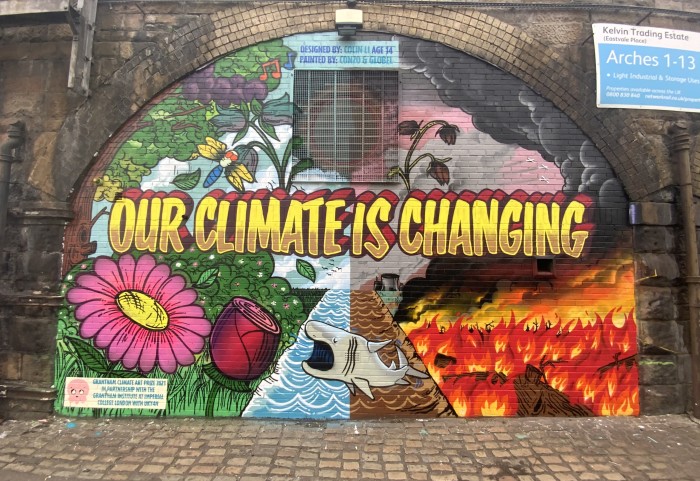
'Our Climate is Changing’ is the winning mural for Glasgow, designed by Colin Li, painted by Ciaran Globel and Conzo Throb

Murals have been painted in seven UK towns and cities depicting local species under threat because of climate change and human activity.
Seven new murals have been designed by young people aged 12-25 years who took part in a national art competition ahead of the UN’s Climate Change Conference (COP26) in Glasgow.
The Grantham Climate Art Prize 2021 is organised by the Grantham Institute - Climate Change and the Environment at Imperial College London in partnership with pioneering energy company Octopus Energy and young campaigners UK Youth for Nature (UKY4N).
The murals are located in: Brighton, East London, Glasgow, Leicester, Nottingham, Rochdale, Stoke-on-Trent.
The full list of winning murals includes:
- Brighton: A woman snorkelling to remove rubbish from a sea where fairy shrimps, seahorses and a kelp forest (a natural carbon store) are at risk from plastic pollution.
- East London: A celebration of the brown banded carder bee, which pollinates wildflowers despite a shortage of hedgerows and grasslands in its urban environment.
- Glasgow: Raging wildfires contrasted with a sea and landscape featuring dragonflies, a bluebell (pressurised by invasive species) and the basking shark (at risk from illegal hunting, boat strikes and bycatch) with the slogan ‘Our Climate is Changing’.
- Leicester: A European hedgehog and large garden bumblebees thriving in nature, contrasted with a polluted city scape and the declaration ‘The future, it’s up to you’.
- Nottingham: A scene with bees, a hazel dormouse and Nottingham catchfly in fields surrounding homes and a wind farm, entitled ‘We can Bee in Harmonee’.
- Rochdale: A celebration of the increased number of grey herons resulting from concerted conservation efforts over three decades.
- Stoke-on-Trent: A white clawed crayfish and a dingy skipper butterfly holding a ‘Help us keep our home’ sign evocative of the street homeless.
The aim of the project is to highlight the issue of biodiversity loss – at a time when a quarter of UK mammals are at risk of extinction and 60% of UK’s most important species have decreased in abundance.
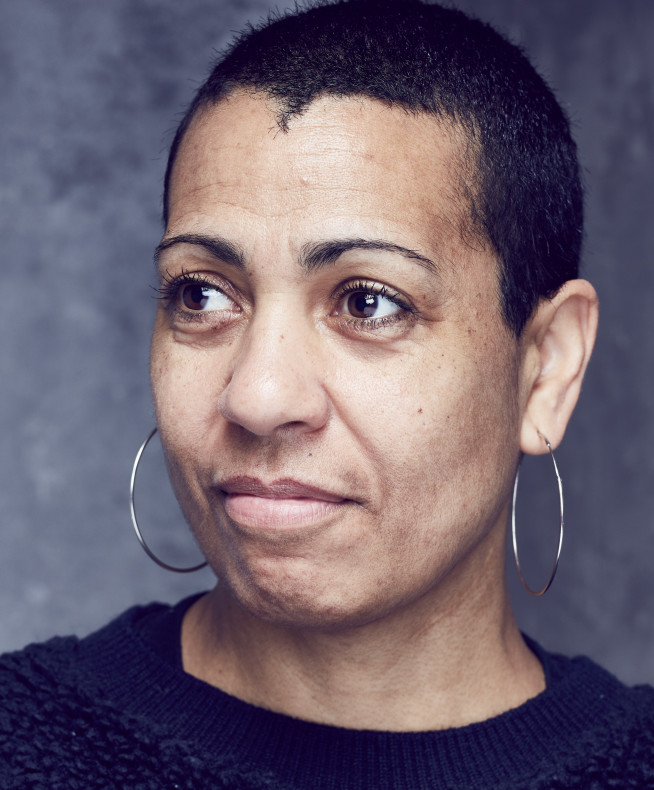
Helen Cammock, winner of the Turner Prize and Max Mara Art Prize for Women, who is the patron of the Grantham Climate Art Prize, said: "Art is a powerful way of communicating ideas, thought and emotion. I feel privileged to support a prize that enables young artists to communicate their commitment, ideas and sense of urgency about how we tackle the climate crisis."
All murals feature at least one regional endangered species from local and UK Biodiversity Action Plan - Priority Species Lists.
Photographs of the murals and runner up designs will be seen by world leaders in an exhibition at COP26.
Professor Martin Siegert, Co-Director of the Grantham Institute - Climate Change and the Environment at Imperial College London, said: "Art has the potential to inspire minds and touch emotions in a way that science alone often finds challenging. Public art offers us a way to engage broad audiences to appreciate the climate problem in multiple interesting and imaginative ways, often reflecting local as well as global issues and consequences. We hope the Grantham Climate Art Prize will help raise public awareness at this critical moment, and fuel political determination at COP26 in Glasgow this year."
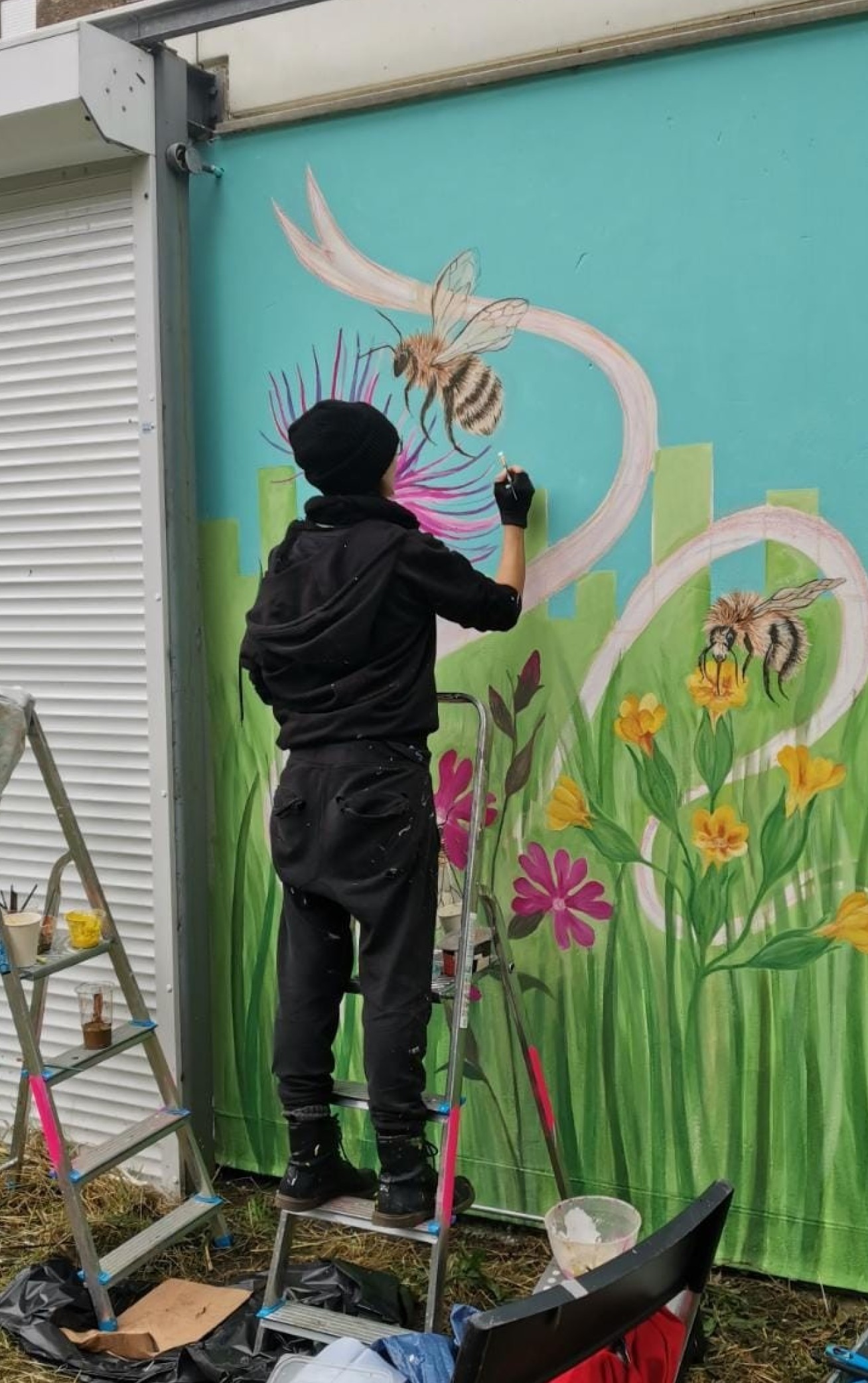
They will also be on display in venues including regional Real World Science network art galleries and museums, Imperial College London and on Octopus Energy’s advertising billboards in London in November.
All the winning designs can be seen at octopus.energy/grantham-art.
Greg Jackson, CEO and founder of Octopus Energy, said: "Young people gave the world a much-needed wake-up call on the climate emergency. We hope this competition will further fuel the debate on climate change and biodiversity in families and schools throughout the country."
Winners each received £250 after the decision of the judging panel, which included climate experts at the Grantham Institute, regional mural artists and representatives from Octopus Energy, UKY4N (the UK’s leading youth-led network calling for urgent action to address loss of nature and wildlife), and the Natural History Museum’s Real World Science network.
Ciaran Globel, who painted the Glasgow mural, said: “Having young people's voices heard on this issue is of vital importance. The young people of today are the adults of tomorrow and they have the foresight to see they are inheriting a planet that is becoming increasingly dangerous to the health and wellbeing of all species. The climate crisis still isn't being taken as seriously as it needs to be, so making bold statements is essential. Mural art sadly won't save the planet on its own, but it can be used as an effective tool to quickly and effectively highlight the issues that are important and it's essential that young people are at the forefront of creating these messages.”
Parallel projects highlighting the plight of species
The competition has been run in parallel with UKY4N’s Natural Kingdom: Wild Walls project in which professional artists have painted murals in seven locations (within six cities).
Species featured include: bottle nose dolphins in Aberystwyth; the northern dune tiger beetle in Liverpool; Irish hare, oyster catcher and lapwing in Belfast; the otter and wetlands kingfisher in Cardiff; the fen violet and beaver in Nottingham; and, moss, curlew, health butterfly, sundews and the brown banded carder bee in Hulme in Manchester.
Aura Goldman, Creative Director of UK Youth for Nature’s ‘Natural Kingdom: Wild Walls’ campaign, said: "The Grantham Climate Art Prize couldn’t be happening at a more critical time, as there has never been a better or more urgent moment to tackle the nature and climate crises together. Engaging people’s imaginations, these murals will provide a point of reference from which to address the government’s progress towards effective policy and action on nature. The longevity of these murals will sustain public engagement with the importance of robust ecosystems for years."
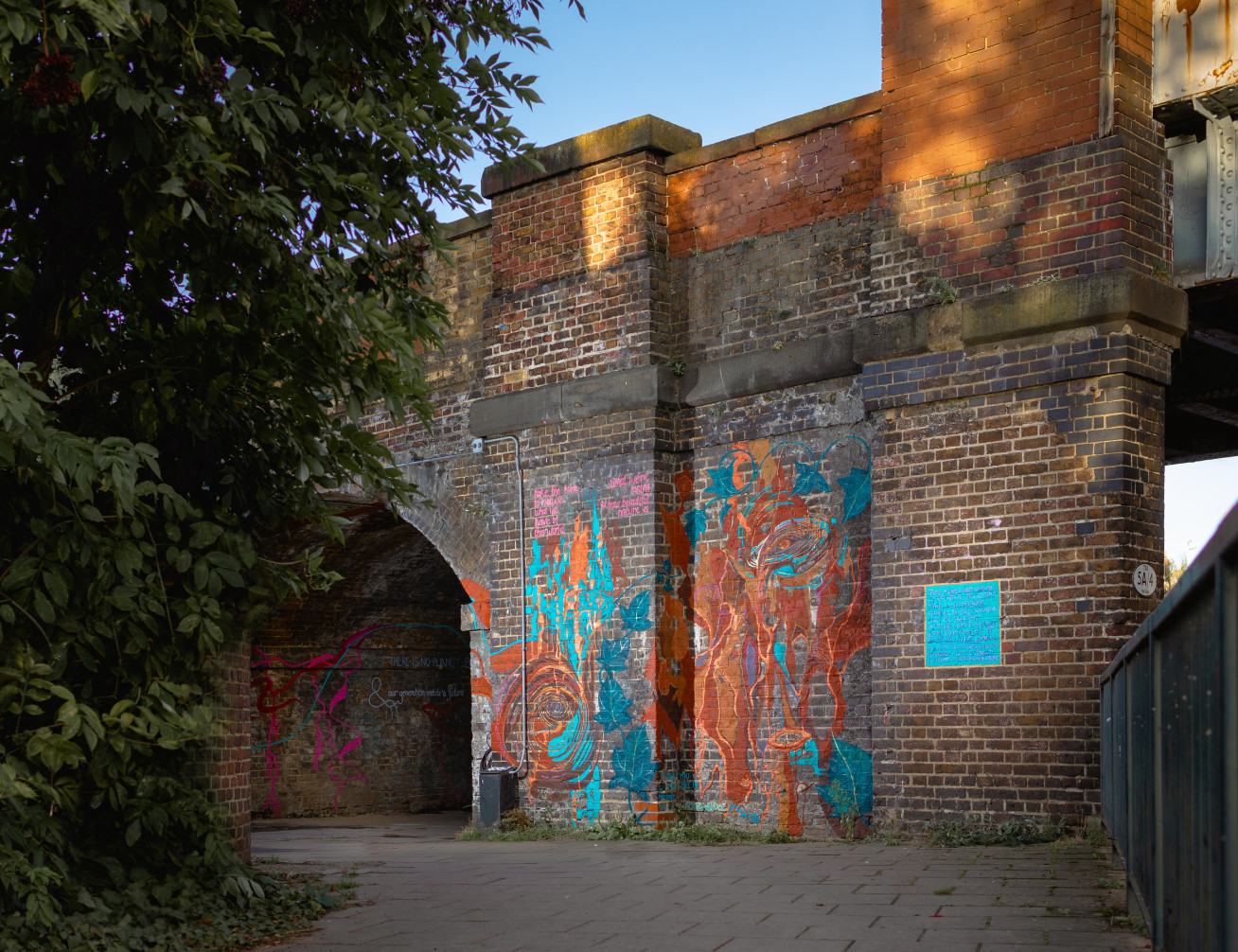
It has run alongside a pilot project in Richmond-upon-Thames where students, who had been personally affected by COVID-19, from two local schools worked with artist Bryony Benge-Abbott and scientists from the Grantham Institute to develop their ideas through a series of workshops.
This resulting in the painting of a nature-inspired mural and poetry in a railway tunnel entitled ‘Take the Time’, reminding passers-by to pay attention to nature.
Dr Will Pearse, Senior Lecturer in Applied Ecology at Imperial College London, and one of the scientists supporting the Grantham Climate Art Prize and the pilot project in Richmond, said: "We are seeing the impacts of climate change only now beginning to start. We are beginning to have losses of species. What we are in danger of losing is not just the species themselves, but also the services that they provide us."
About the Grantham Climate Art Prize 2021
The Grantham Climate Art Prize offers young artists an opportunity to communicate messages about climate change and was piloted by the Grantham Institute - Climate Change and the Environment at Imperial College London and the Royal College of Art in 2019, with support from: Professor Peter Kennard, celebrated photomontage artist and professor of Political Art at the Royal College of Art; Dr Alice Bell, co-director of leading zero carbon campaign group Possible; and, Alison Tickell, the chair of Julie’s Bicycle, a charity that supports the creative community to act on climate change.
9 things you can do to protect the natural world
The Institute has produced 9 things you can do about climate change, which received widespread interest. These actions are: making your voice heard by those in power, eating less meat and dairy, cutting back on flying, leaving the car at home, reducing your energy use and bills, respecting and protecting green spaces, investing your money responsibly, cutting consumption and waste and talking about the changes you make.
In addition, the Grantham Institute recently produced an illustrated list of 9 things you can do to protect the natural world along with an illustrated leaflet and digital feature on this.
Article text (excluding photos or graphics) © Imperial College London.
Photos and graphics subject to third party copyright used with permission or © Imperial College London.
Reporters
Simon Levey
Communications Division

Contact details
Tel: +44 (0)20 7594 5650
Email: s.levey@imperial.ac.uk
Show all stories by this author

Linsey Wynton
The Grantham Institute for Climate Change

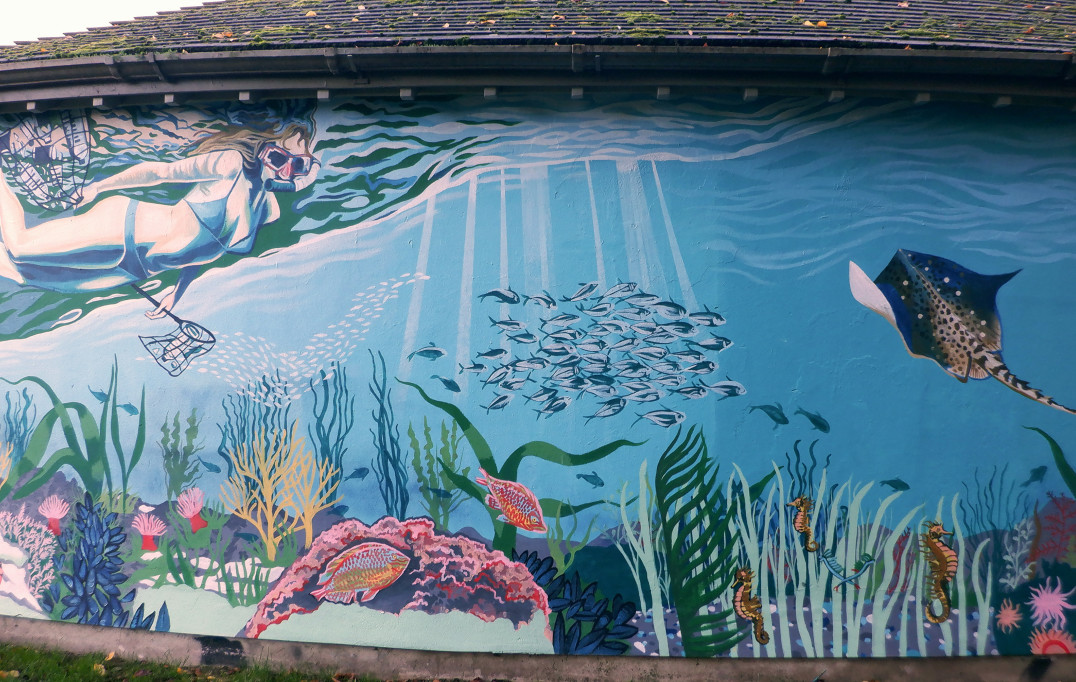

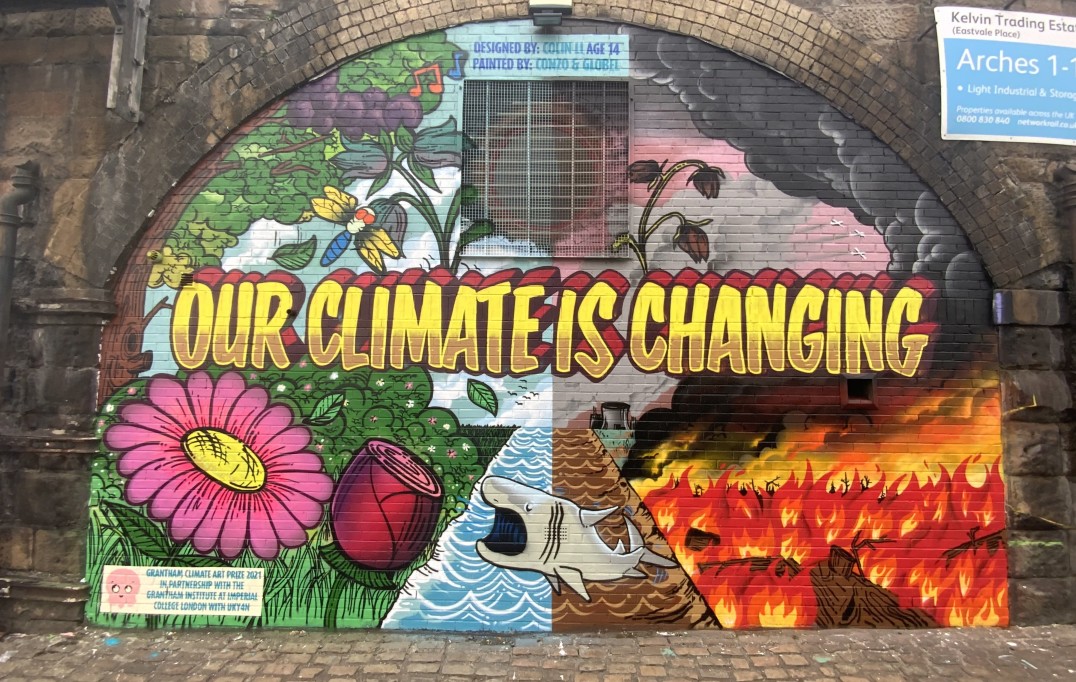
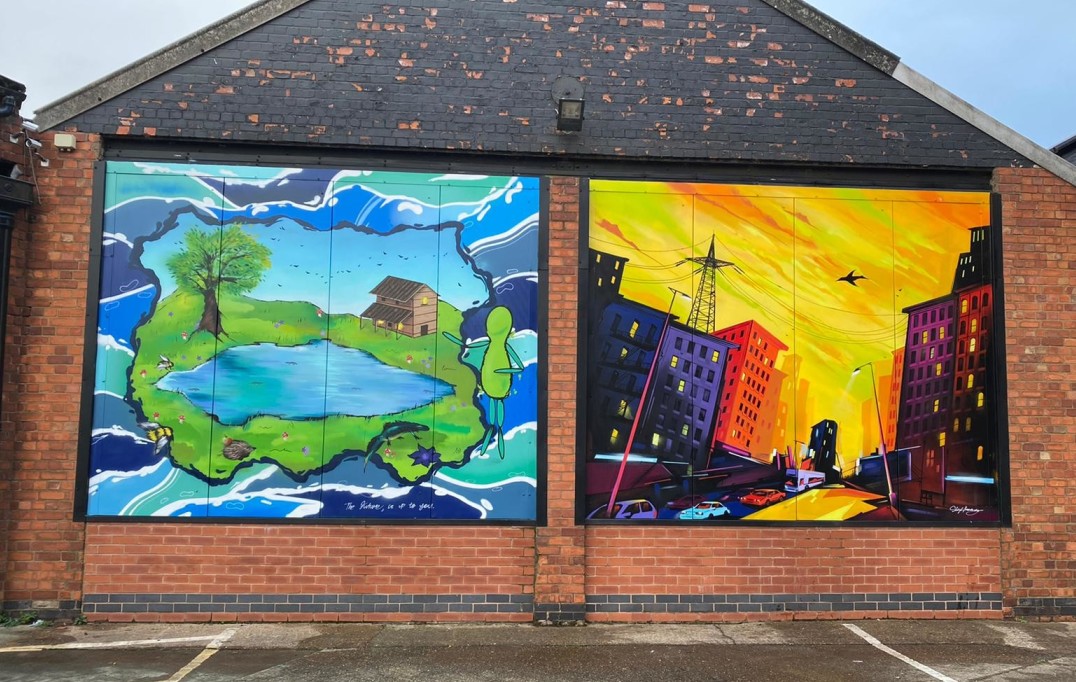
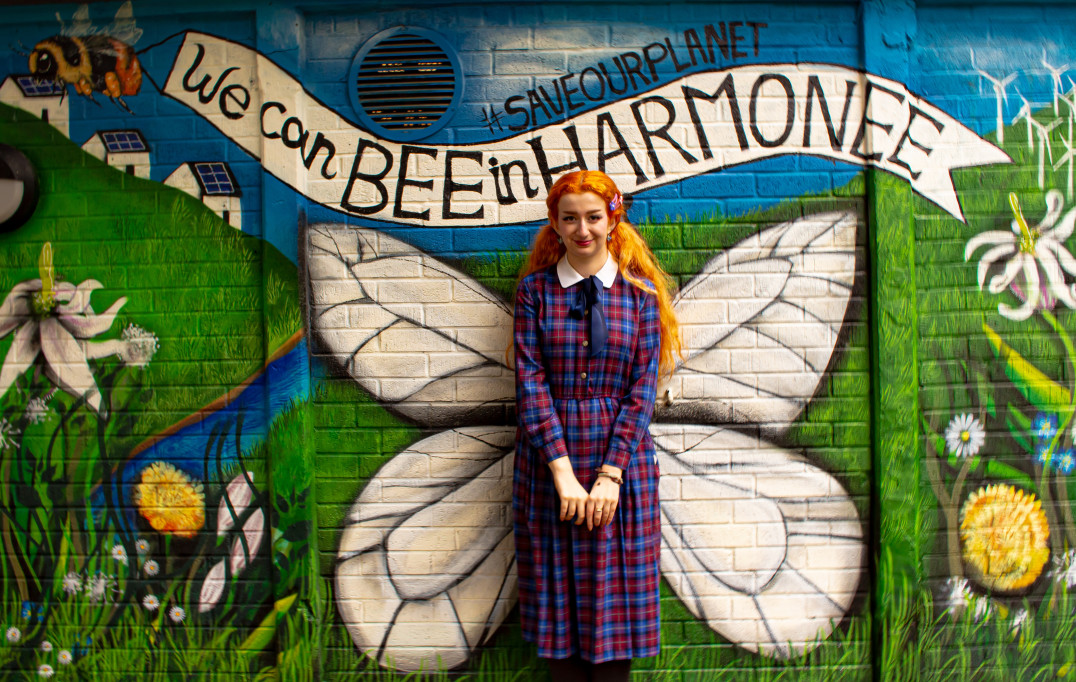

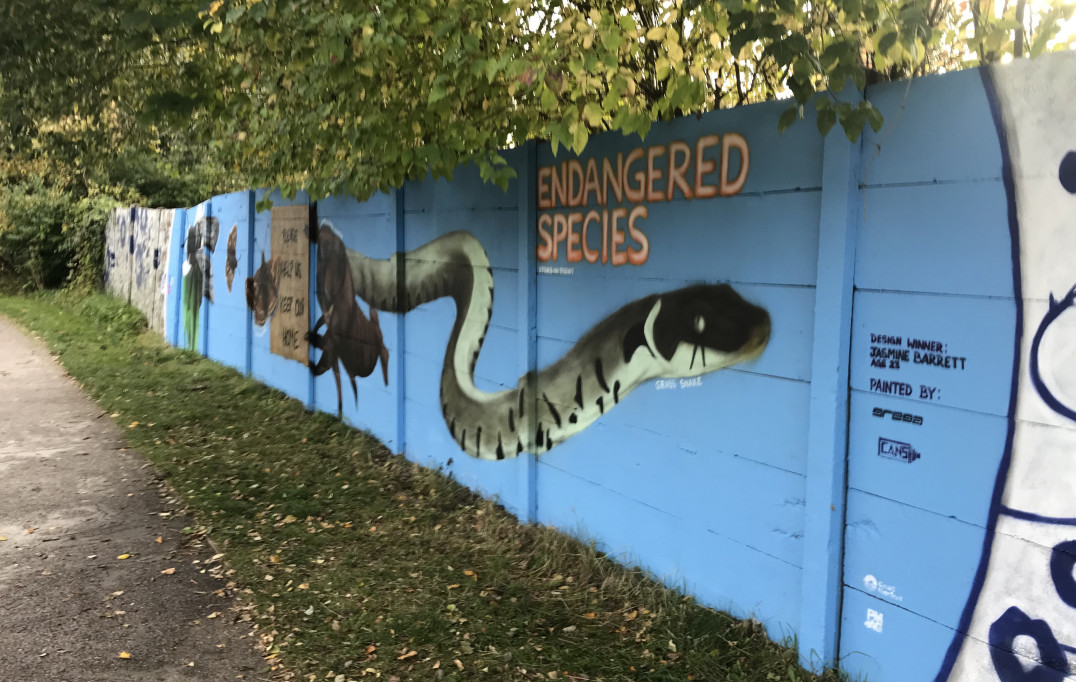



Leave a comment
Your comment may be published, displaying your name as you provide it, unless you request otherwise. Your contact details will never be published.